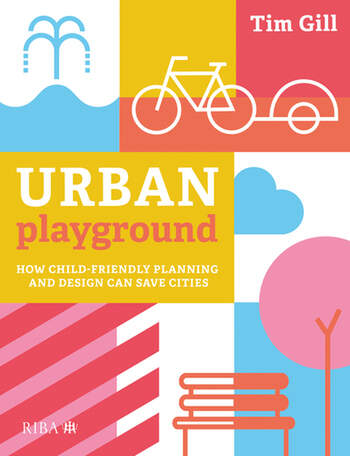Gill, Tim. Urban playground: How child-friendly planning and design can save cities. Riba Publishing, 2021.

“What will cities look like in the future”? Answers might include images of crowded skyscrapers, overpopulation, or the eventual apocalypse. Although these hypotheticals might seem entertaining, this is a real question that many urban planners must consider. Urban playground puts the focus on children and building child-friendly cities as a focus, with the central premise that the future of our cities must take into consideration the children that will occupy these spaces, as well as their quality of life. Gill argues that ultimately, everyone benefits from a city built for children. In addition, Gill not only focuses on the idea that city planning is for the children, but that child-friendly planning can simultaneously boost the longevity of cities.
Gill clearly describes the characteristics of a child-friendly city – using examples of cities across the world that represent these ideals. To further his points, he also discusses cities that have attempted to be child-friendly but have failed. More notably, Gill dedicates an entire chapter to providing realistic principles to create child-friendly cities such as: (1) the principle of building a shared vision and set of values and (2) the principle of developing supportive programming, as well was more direct urban design features such as creating liveable streets and playful public space. Gill highlights some of the benefits of child-friendly cities including (but not limited to): lowered carbon emissions, less traffic, and more sustainable modes of transportation (e.g., walking and cycling).
This book explores an academic topic with accessible language, expanding its audience from urban planners and other professionals to those who might take an interest in the future of our cities. This book might be of interest in the widespread debate and concern amongst “Gen Z” (individuals between 10 to 25) in OECD member countries; whether it is ethical or not to bring more children into this world. It is interesting to consider how the child-friendly cities discussed in the book become a part of young people’s decisions to have children – demonstrating how the potential restructuring of society and changes to cities can reflect and adapt to current social dilemmas.
- Hanna De Jesus
